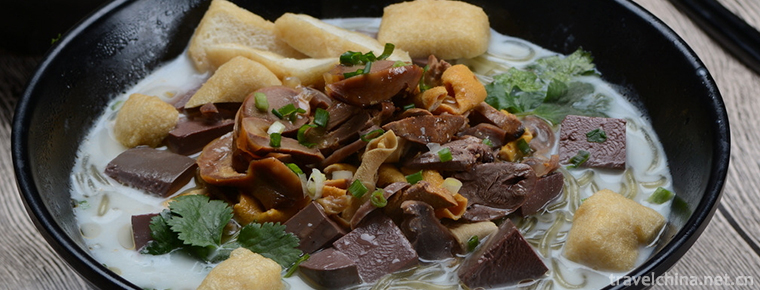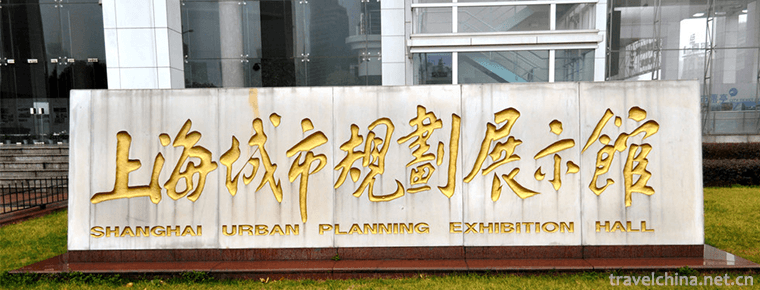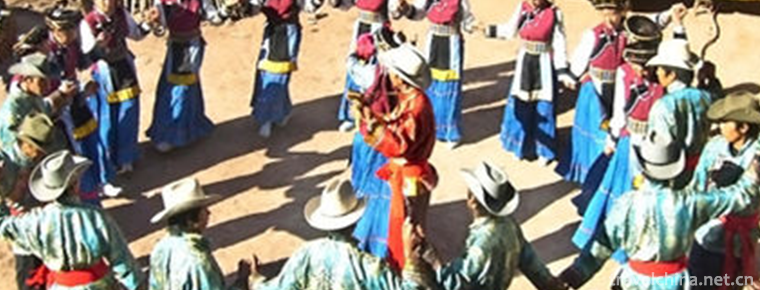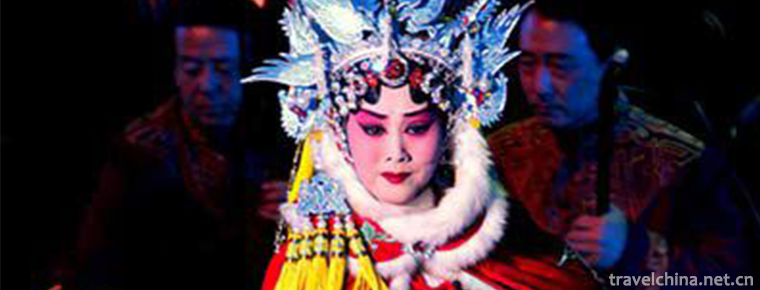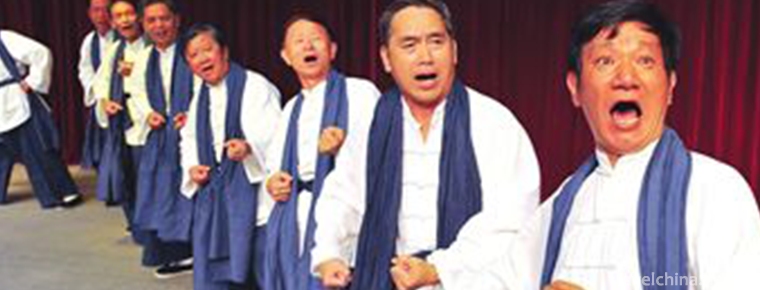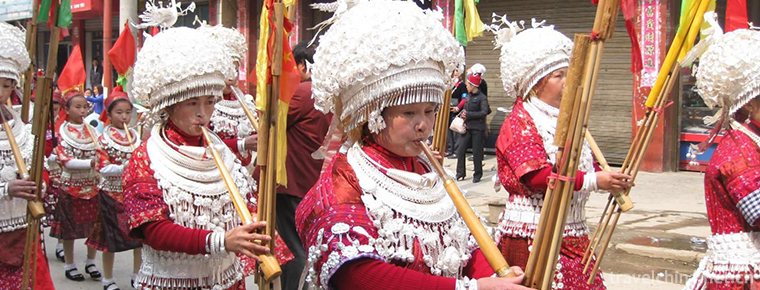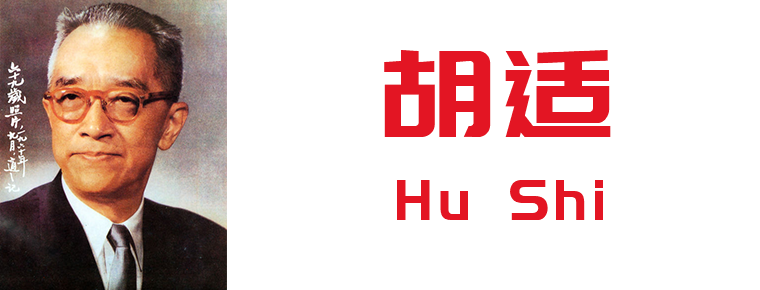Han tune
Han tune
The mast of Hanzhong Diaoqu, a local traditional drama in Hanzhong City, Shaanxi Province, is one of the national intangible cultural heritages.
Eucalyptus Opera of Han Diao, also known as Qin Opera of Han Diao, Qin Opera of Nanlu and Gu Opera, was introduced into Hanzhong area in the late Ming Dynasty and formed by the combination of local dialects and folk music. It was popular in various counties and districts of Hanzhong, and spread to Ankang, Hubei, northern Sichuan and Eastern Longdong. The singing of the mast of the Han tune is not only the beauty of the Qin tune's high-pitched and surging, but also the beauty of the elegance and gentleness of the local music in southern Shaanxi.
On May 20, 2006, the mast of Han Diao was approved by the State Council of the People's Republic of China to be included in the first batch of national intangible cultural heritage list, the heritage number: IV-17.
historical origin
As a national drama, the eucalyptus of Han Diao has entered a period of prosperity and development after a long period of germination, gestation and formation in the Song Dynasty. The mast of the Han tune is worshipped to the King of Chuzhuang, which is different from the emperor of Tang and Ming Dynasties in Qin Opera. This shows the regional characteristics and sources of belief. Some clues can be found in documents and unearthed cultural relics.
In the Western Han Dynasty, Zhang Qian, a diplomat born in Chenggu County, brought back such musical instruments as Hugu and Pipa from various countries in the Western Regions, as well as the drumming music "Mohe Dule" opera, which provided a reference for opera music.
Tang Dezong and Qi Zong fled to Hanzhong, which promoted the influence of military opera on Hanzhong.
Song Han Yi-zhi wrote a poem about Xixiang, Chenggu and Yangxian's theatrical activities: "People play the orchestra at night and moon" and "Noise advocates Ying Shenshe". Cai Jiaozhou has a record of "Officials set up curtains to enjoy the people". Lu You is also a soldier in Nanzheng, where "Huadeng beats all over the building, and Baochai dances in full swing." Pipa strings are in a hurry and hail, and drummers are in a hurry. In the Song Dynasty, the old temple and the temple of the God of wealth in Luoyang County had built one theatrical building each.
Yangxian County Town God's Temple opera house was built in Ming Hongwu for four years (1371). The traditional custom is that there are two theatrical troupes in the temple fair every year in the 2th day of the eighth month of the Chinese lunar calendar, three games a day, at the noon and afternoon in the side stage competition, and in the evening to sing "Taiwan opera" in the middle stage, and a family ninety percent off to play until dawn. All these prove the early gestation and development of the mast in Hanzhong opera.
During the Wanli period of the Ming Dynasty (1573-1620), the old Qin Opera was introduced into the Hanzhong area. During the Qianlong reign of the Qing Dynasty (1736-1795), Qin opera artists in Yangxian area borrowed local dialects, folk songs, minors and so on to enrich the original tunes, so that the tone and style of the old Qin opera were no longer as high and agitated as the Qin opera, so strong and urgent, but became soft and delicate, lingering and melodious. As a result, the opera with local characteristics, the mast of HanDiao, was formed.
Cultural characteristics
Accent
The singing style of the mast in the Han tune belongs to the variation of the panel tune, which not only embodies the beauty of the Qin tune, but also reflects the elegance and softness of the local music in southern Shaanxi. The Danjiao tune is high and stresses the singing of "hard three-eye tune". The face is good at using "Xiu tone". The voice is high in octave, mostly singing in falsetto, and the tail tone is long, so it is called "old and young match". The singing style includes second-rate, adagio, pointed board, block head and so on, and can be divided into "soft", "hard", "fast" and "slow". "Soft" is the bitter sound of sad mood, "hard" is the joyous sound of happy mood, "fast" is the allegro, and "slow" is the adagio.
Musical Instruments
The accompaniment of the Eucalyptus in the Han tune is different from that in the martial arts. The former Wenchang is mainly composed of two strings of cover plate, then it is replaced by Banhu, with Beijing Hu, sea flute and three strings. The percussion instruments such as sharp drums, flat drums, hook gongs, cymbals, bangs, teeth and wooden fish are used in the martial arts.
Skill
The performance of the mast in Han Diao pursues a great deal of exaggeration, such as "hoop barrel", "lotus flower", "playing chair", "stick shelf", "hanging wool cover", "changing face", "changing clothes", "carrying fire" and many other unique skills, as well as a lot of knives and guns, sticks, fists and feet, and the unique figure of tumbling. Before the Republic of China, when the mast of the Han Diao was performing, the students and the net did not wear boots and often wore straw shoes; once the corners and faces were powdered, flowers could be arranged on their heads. Although its costumes and make-up are simple, singers are very particular. Locals are accustomed to listening to Shili Major at night, and far away from it. It is called "Yan Crossing Liang".
Profession
In the past, the trade of the mast in Han Diao was divided into five categories: birth, death, purity, end and ugliness. In the case of shortage of performers in the troupe, Xiaosheng and Xiaodan can complement each other. Dajing will play Laodan, Erhualian will play Caidan, and clowns will play miscellaneous roles. With the advancement of history, the rich repertoire and the improvement of audience's appreciation requirements, the line of business is expanded and the role assignment is more detailed. Artists are generally referred to as the "Eight Great Lines". They are Yijing, Ermo, Sansheng, Sidan, Five Ugly, Six Old, Seven Small and Eight Miscellaneous.
Representative repertoire
There are more than seven hundred traditional operas in Han Diao, of which there are more than five hundred and sixty copies and one hundred and seventy folded operas. Among them, more than one hundred kinds of operas are unique to Han Diao, such as Liu Gao Grinding Dao, Qi Tiejian, Setting Sun Mountain, Shui Guan Jinyang, Red Muppet, Emperor's Pearl, Shadowless Sword, Na Pavilion, Cao Po Facing and so on. Other plays have been lost or incomplete.
Inheritance and protection
Inheritance value
As a traditional local opera in the Hanshui River basin, especially in the upper reaches of the Hanshui River, the mast of the Hanshui Tune not only inherits the common value system and criteria of the Chinese nation, but also embodies the unique regional cultural characteristics of the region. The influence of geographical environment and the influence of regional culture make the mast of the Hanshui Tune have its own unique spiritual connotation, voice, music, performance program and so on. It still has its own characteristics. Existential value and cognitive value.
Protection status
In recent years, the audiences of the mast of Han Dialect have been decreasing day by day. Class clubs and theatre troupes have disintegrated one after another. Artists have been dispersed. Traditional repertoires, opera cards and performing skills have been or will soon be lost. At present, only one Opera Troupe in Nanzheng County is still performing. It is still facing financial difficulties and talent shortage. It is difficult to persist for a long time. Practical measures must be taken to rescue and protect it.
Inheriting characters
Tao Qing, male, Han nationality, born in 1940 in Nanzheng, Shaanxi Province. On June 14, 2008, Tao Qing was selected as the representative successor of the second batch of state-level intangible cultural heritage projects and declared by Hanzhong City, Shaanxi Province. Declaration items: the mast of Han Diao.
Xu Xinping, female, Han nationality, born in 1941, Chenggu, Shaanxi Province. On June 14, 2008, Tao Qing was selected as the representative successor of the second batch of state-level intangible cultural heritage projects and declared by Hanzhong City, Shaanxi Province. Declaration items: the mast of Han Diao.
Zhang Tianming, male, Han nationality, born in 1940 in Yangxian County, Shaanxi Province. On June 14, 2008, Tao Qing was selected as the representative successor of the second batch of state-level intangible cultural heritage projects and declared by Hanzhong City, Shaanxi Province. Declaration items: the mast of Han Diao.
protective measures
Nanzheng County has solved the salary problem of the students of the county guyed Opera Troupe and fundamentally relieved the worries of the successors. In 2009, with the support of the Nanzheng County Party Committee and the county government, the salary of the performers of the troupe was raised from 480 yuan to 1500 yuan per month. Since July 1, 2011, the Nanzheng County Eucalyptus Troupe has been listed as a full financial allocation institution. After 2011, it will be adjusted to more than 3000 yuan.
In 1986, Nanzheng Mast Opera Troupe held a drama training course to train 40 young performers. Sixty 14-year-old pupils were selected from primary school graduates in the county, and a drama training course was set up in the county vocational education center. Professional teachers were recruited to train new generations of inheritors for the eucalyptus of the Han Diao in accordance with the law of talent cultivation. In 2013, 60 pupils, mainly primary school students, were enrolled in the County Vocational Education Center for three years to train successor talents for the mast drama.
Nanzheng County Finance allocated 180,000 yuan of special funds for 90 representative inheritors of county-level non-heritage protection projects, each of whom issued 2,000 yuan of study grants annually. In 2013, recommended by the Ministry of propaganda of Nanzheng County Committee, Han Xinbai Jiang was supported by 500,000 yuan of cultural projects of the Ministry of Propaganda of Shaanxi Provincial Committee.
Non-hereditary study halls have been set up in Nanzheng County Cultural Museum, Gaozhuang Village of Hanshan Town and Shuijing Village of Huangguan Town, which regularly organize and carry out training activities to encourage old artists to carry out apprenticeship. In 2014, the troupe moved into a new theatre built by the government.
social influence
Honorary commendation
In 2002, the newly-written historical drama "Qianjin Buying Laughter" won 10 awards in the Third Shaanxi Art Festival.
Important performance
From September 29 to October 6, 2017, the mast of HanDiao in Zheng District, central and southern Han Dynasty appeared in Beijing Chinese Opera Culture Week.
Important activities
In the spring of 1951, the Nanzheng New Folk Opera Society was founded by artists from Tongle, Juyue, Xie and three classes. It began on June 25, 1951, and later changed its name several times. It has developed into Nanzheng County Mast Dream Troupe. It has become the only professional troupe to inherit and perform the Mast Dream Drama in Han Diao.
Derivative works
In 2011, "Personalized Collection of HanDiao Mast Stamps" was issued, and 20 postcards of HanDiao Mast were issued in 2012.
In 2012, Zhang Changwen and Wei Yiyou edited the "Han Diao Mast" (Zhishu) by Shaanxi Science and Technology Publishing House.
In 2013, the audio production of the newly edited historical drama "Qianjin Buying Laughter" was published.
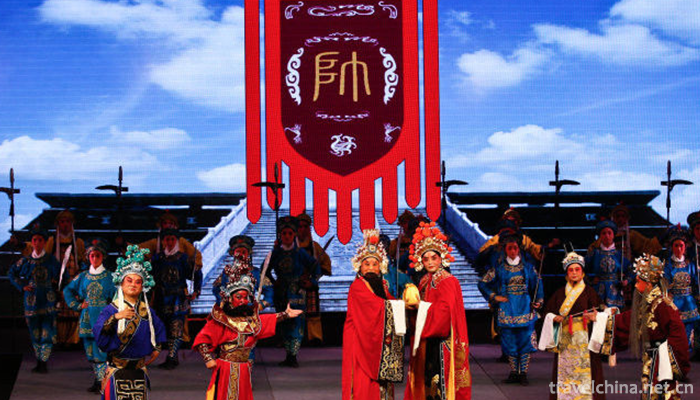
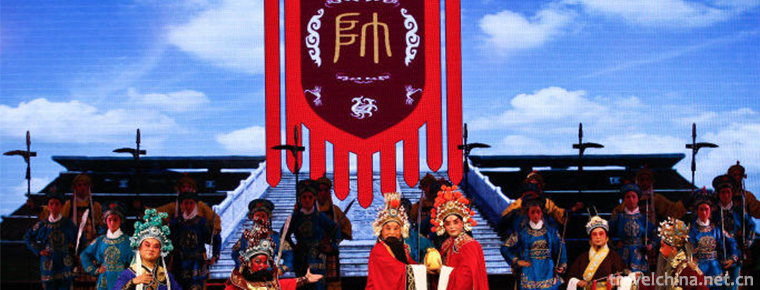
Han tune
-
Duck blood soup with vermicelli
Duck blood vermicelli soup is a famous specialty in Nanjing, belonging to Jinling food...
Views: 246 Time 2018-10-26 -
Shantou beef ball
Views: 484 Time 2018-11-02 -
Shanghai Urban Planning Exhibition Hall
The Shanghai Urban Planning Exhibition Hall was completed in early 2000 and opened to the public on February 25, 2000. As an important window for Shanghai's external publicity, Shanghai
Views: 148 Time 2018-12-19 -
Steamed egg with sand
Steamed eggs with ginseng sand is a traditional Chinese medicine, which has the effect of invigorating qi, nourishing blood and soothing the mind.
Views: 179 Time 2019-03-24 -
Dulong Kakuwa Festival
Dulong Kakuwa Festival spreads in all Dulong villages in the Dulong River Valley in the west of Gongshan Dulong Nu Autonomous County, Nujiang Lisu Autonomous Prefecture
Views: 168 Time 2019-04-28 -
Random Bomb Luan tan
Random Bomb, a traditional drama in Taizhou and Pujiang counties of Zhejiang Province, is one of the national intangible cultural heritage.
Views: 218 Time 2019-05-15 -
Wharf song
The dock number is a traditional folk song in Shanghai. Singing in docks, cargo yards, loading and unloading, lifting, push and pull and other labor occasions. The main singing methods of wharf number
Views: 150 Time 2019-05-16 -
Shiwan Ceramic Sculpture Technology
Shiwan pottery sculpture has a long history. It first appeared in the Eastern Han Dynasty. It reached its peak in the Song Dynasty. After the founding of New China, the manufacturing level and artisti
Views: 159 Time 2019-06-15 -
Hulusheng Dance of Yi Nationality
Hulusheng Dance of Yi Nationality, the traditional dance of Wenshan Zhuang and Miao Autonomous Prefecture in Yunnan Province, is one of the national intangible cultural heritage.
Views: 134 Time 2019-07-12 -
Hu Shi
Hu Shi (December 17, 1891 - February 24, 1962), who used the name "Xi Jiang", learned the name of Hong Kong, and later changed his name to the right word. A thinker, a writer, a philosopher.
Views: 180 Time 2019-09-07 -
International cooperation of Chengdu Giant Panda Base
According to the major political and diplomatic needs of the country, under the leadership of the state, provinces and cities, the panda base has successively established a "long-term international cooperative breeding program for giant pandas" with Japan, the United States
Views: 133 Time 2020-12-13 -
Administrative division of Yibin
Yibin City has 10 county-level administrative divisions (Municipal District 3, county 7), 136 township level administrative divisions (street 14, town 105, township 17). It covers an area of 13271 square kilometers and has a population of 5.52 million. Yibin Municipal
Views: 336 Time 2020-12-18
